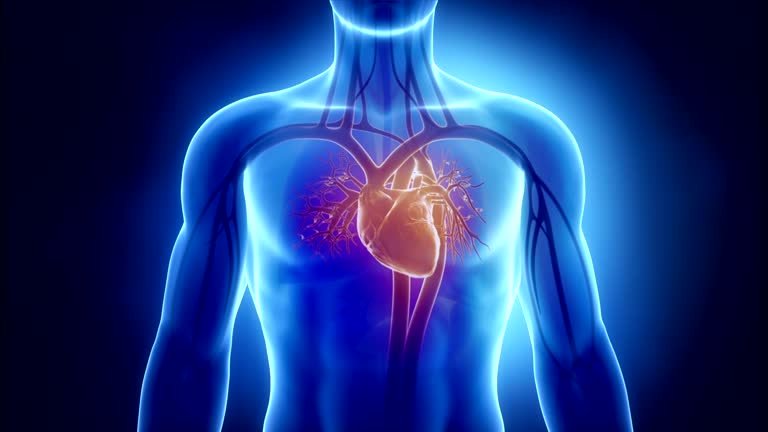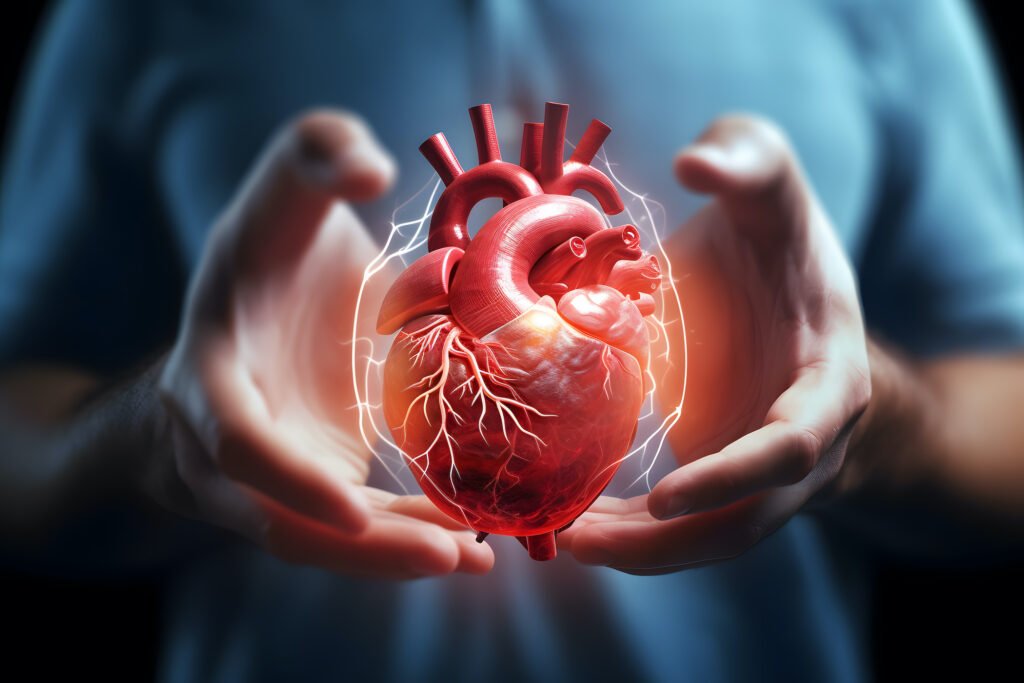The Science Behind the Heartbeat
The human heartbeat is a complex physiological phenomenon that plays a pivotal role in sustaining life. At the core of this process is the heart, an intricate muscular organ comprised of four chambers: the right and left atria, and the right and left ventricles. The heart’s primary function is to pump oxygenated blood throughout the body, delivering essential nutrients to tissues and organs, while also facilitating the removal of carbon dioxide and waste products.
The heartbeat is orchestrated by a sequence known as the cardiac cycle, which consists of two main phases: diastole and systole. During diastole, the heart muscles relax, allowing the chambers to fill with blood. In contrast, during systole, the heart muscles contract, propelling blood out of the heart and into the circulatory system. This rhythmic contraction and relaxation create the pulse that can be felt throughout the body.
A critical component in the regulation of the heartbeat is the electrical signaling that initiates and coordinates each pulse. This process is governed by specialized cells located in the sinoatrial (SA) node, often referred to as the heart’s natural pacemaker. The SA node generates electrical impulses that spread through the heart, leading to synchronized contractions. This dynamic electrical activity is essential for maintaining a consistent heart rate, which can fluctuate based on various factors, including physical activity, emotional state, and overall health.
Heart rate, measured in beats per minute, varies widely among individuals and can change in response to different conditions. For instance, during exercise, the heart rate typically increases to meet the heightened demand for oxygen, whereas during periods of rest, it decreases. Understanding these physiological aspects of the heartbeat underscores the complexity and adaptability of the heart as it responds to the body’s needs.
Heartbeat Variability: What It Means
Heartbeat variability (HRV) refers to the variation in time intervals between consecutive heartbeats, which is a reflection of the autonomic nervous system’s regulation of the heart. A healthy heart does not beat at regular intervals; rather, the timing between beats fluctuates in response to various physical and emotional stimuli. HRV is considered a significant indicator of overall health, as it reveals insights into the body’s stress levels, athletic fitness, and the functioning of the autonomic nervous system.
HRV can be measured using various methods, including electrocardiograms (ECGs), heart rate monitors, or wearable fitness trackers. These devices assess the duration between individual beats, allowing for calculation of HRV. The normal ranges for HRV can vary widely among individuals, but generally, a higher HRV is associated with better health outcomes, while a lower HRV may indicate stress or potential health issues. A typical HRV for a healthy adult can range from 20 to 200 milliseconds, but athletes often exhibit HRV values that are significantly higher, reflecting their physical conditioning and adaptation to physical stressors.
The implications of both high and low HRV are considerable. High HRV is typically associated with good cardiovascular fitness, resilience to stress, and optimal recovery after exercise. On the other hand, low HRV can signal chronic stress, fatigue, and a disorder in the autonomic nervous system, which may elevate the risk for various health conditions. For instance, athletes monitor their HRV to optimize training regimens, as it can indicate when to push harder or when to rest. Real-world examples abound, including research linking lower HRV to increased risk of cardiovascular events and mental health issues. Such findings showcase HRV as a valuable biomarker for health and wellness, offering deeper insights into the interplay between our physical state and emotional well-being.
Impact of Lifestyle on Heart Health
The relationship between lifestyle choices and heart health is a critical area of study within the medical field, as various factors can significantly affect the quality of the heartbeat. Diet plays a pivotal role; for instance, a diet rich in fruits, vegetables, whole grains, and healthy fats can improve cardiovascular health while reducing the risk of heart disease. Contrarily, diets high in processed foods, sodium, and unhealthy fats are linked to elevated blood pressure and cholesterol levels, thereby adversely impacting heart function.
Exercise is another essential component of maintaining a healthy heartbeat. Regular physical activity strengthens the heart muscle, improving its efficiency and reducing the likelihood of heart conditions. Engaging in aerobic exercises such as walking, cycling, or swimming for at least 150 minutes per week is often recommended for optimal heart health. Conversely, a sedentary lifestyle can exacerbate cardiovascular risks, leading to weight gain and reduced heart function.
Stress management is equally important, as chronic stress has been associated with various heart issues, including hypertension. Stress can lead to unhealthy coping mechanisms such as overeating, smoking, or excessive alcohol consumption, all of which can impair heart health. Techniques such as mindfulness, yoga, and meditation can help mitigate stress, contributing to a healthier cardiovascular system.
Sleep quality must not be overlooked. Insufficient or disrupted sleep patterns can negatively affect heart health, increasing the risk of hypertension and other cardiac conditions. Individuals should aim for 7-9 hours of quality sleep per night to promote optimal heart function.
Furthermore, regular check-ups are vital for monitoring heart health over time. Healthcare professionals can conduct assessments and suggest preventive measures tailored to individual needs. In today’s world, medications and technology, such as heart monitors, can aid in managing heart health effectively, offering real-time insights into one’s cardiovascular status.
Innovative Research and Future Directions
Recent advancements in cardiac research have paved the way for significant breakthroughs in understanding and treating heart diseases. With the increasing prevalence of cardiac conditions globally, ongoing studies aim to enhance our knowledge of the heart’s complexities and improve treatment options. Researchers are exploring various avenues, from genetic studies that seek to uncover hereditary factors influencing cardiac health, to clinical trials investigating novel therapies targeting specific heart conditions. These innovations are crucial in developing effective strategies to combat heart-related ailments.
One of the most promising advancements in cardiac health is the integration of wearable technology, which has transformed how individuals monitor their heart rates and overall cardiovascular fitness. Devices such as smartwatches and fitness trackers equipped with heart rate monitors empower users to maintain awareness of their heart health in real time. This technological innovation not only fosters a proactive approach to health management but also provides valuable data to healthcare professionals for personalized treatment plans. The ability to continually track heart metrics allows for earlier detection of potential issues, facilitating timely interventions.
Looking to the future, it’s likely that the field of cardiovascular health will witness a shift towards personalized medicine, where treatments and preventive strategies are tailored to individual needs based on genetic and lifestyle factors. The convergence of artificial intelligence and big data analytics in healthcare holds the potential to revolutionize how heart diseases are diagnosed and managed. As we move forward, the implications of such advancements will be far-reaching, improving patient outcomes and overall cardiac health management in the medical community.
With each new study and breakthrough, our understanding of the human heartbeat deepens, revealing that the pulse we often take for granted is indeed a gateway to a wealth of knowledge about our overall health and well-being.





Leave a Reply